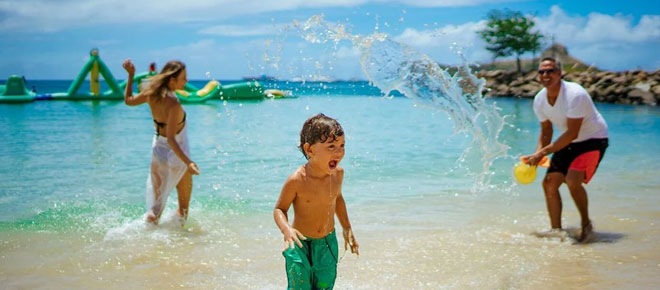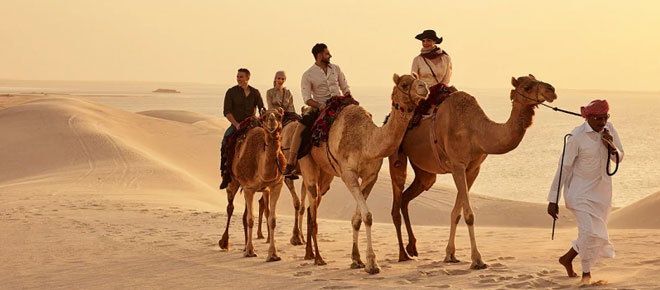Top 3 biggest climbing mountains you dont want to miss it

These biggest climbing mountains you dont want to miss it;
Mount Everest,
Traveling to Mount Everest is a unique and exhilarating experience, but it's important to note that reaching the summit requires extensive mountaineering skills, training, and preparation. Here's some information about traveling to Mount Everest:
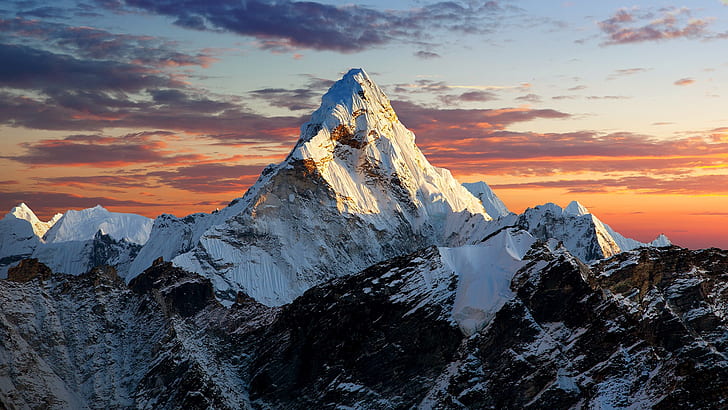
Elevation: 8,849 m
First ascent: May 29, 1953
Prominence: 8,848 m
-
Location: Mount Everest, also known as Sagarmatha in Nepal and Chomolungma in Tibet, is located in the Himalayas on the border between Nepal and China (Tibet). The mountain is renowned for being the tallest in the world, with its summit reaching an elevation of 8,848.86 meters (29,031.7 feet).
-
Base Camp Trek: One of the popular ways to experience Mount Everest is through the Everest Base Camp Trek. This trek takes you to the base camp on the Nepalese side, offering stunning views of the mountain and the surrounding Himalayan landscape. The trek requires a moderate level of physical fitness and typically takes around 12-14 days to complete.
-
Mountaineering Expeditions: For those seeking to climb Mount Everest, it's essential to join a mountaineering expedition. These expeditions typically require extensive preparation, training, and a high level of physical fitness. It's recommended to have prior mountaineering experience and to work with experienced guides and support teams.
-
Climbing Routes: There are two main climbing routes to the summit of Mount Everest: the South Col Route in Nepal and the North Ridge Route in Tibet. The South Col Route, starting from Nepal's side, is more popular and widely used by climbers.
-
Altitude and Acclimatization: Mount Everest's high altitude presents significant challenges due to thin air and the risk of altitude-related illnesses. Proper acclimatization is crucial to allow the body to adjust gradually to the altitude, minimizing the risk of altitude sickness.
-
Permits and Regulations: Traveling to Mount Everest requires obtaining appropriate permits and complying with local regulations. In Nepal, climbers need to obtain a climbing permit from the Nepalese government. In Tibet, a climbing permit and travel permit are required from the Chinese authorities.
-
Weather and Climbing Seasons: The weather conditions on Mount Everest can be harsh and unpredictable. The main climbing seasons are during the spring (April-May) and autumn (September-October) when the weather is relatively stable and favorable for climbing.
-
Safety Considerations: Mountaineering in high-altitude environments carries inherent risks, including altitude sickness, extreme weather conditions, avalanches, and other hazards. It's crucial to prioritize safety, undergo proper training, and work with experienced guides and support teams.
It's important to note that climbing Mount Everest is a challenging and potentially dangerous endeavor. It requires thorough research, physical fitness, technical skills, and appropriate preparation. Engaging the services of reputable mountaineering companies and experienced guides is highly recommended to ensure a safe and successful journey.
K2, Karakoram,
Traveling to K2 in the Karakoram mountain range is a challenging and adventurous journey that requires careful planning and preparation. Here's some information to help you understand what it entails:
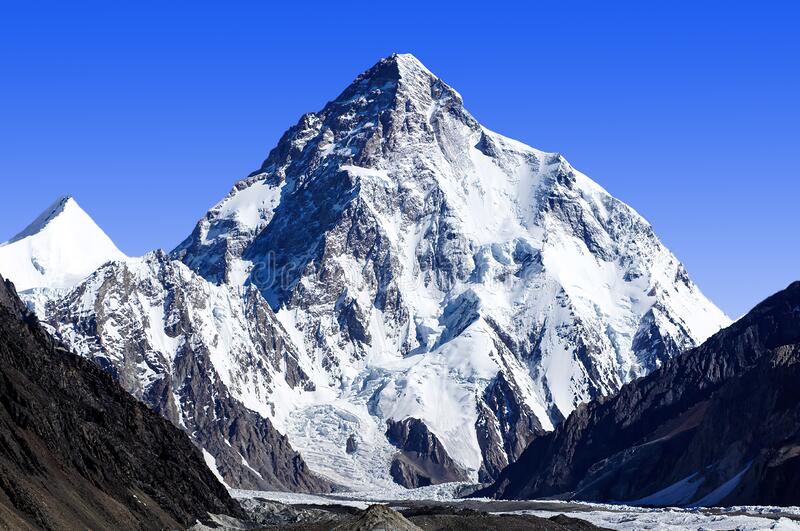
Elevation: 8,611 m
First ascent: July 31, 1954
Prominence: 4,020 m
-
Location: K2, also known as Mount Godwin-Austen or Chhogori, is located in the Karakoram Range on the border between Pakistan and China. It is the second-highest mountain in the world, reaching an elevation of 8,611 meters (28,251 feet).
-
Trekking and Mountaineering: K2 is primarily known for its mountaineering expeditions, attracting experienced climbers from around the world. The mountain presents significant challenges due to its steep and technically demanding routes, unpredictable weather conditions, and high altitude.
-
Trekking Routes: The most common approach to K2 is via the Baltoro Glacier in Pakistan. The journey typically starts from the town of Skardu and involves trekking through scenic valleys, crossing glaciers, and passing through remote villages like Askole and Concordia.
-
Permits and Logistics: Traveling to K2 requires obtaining permits and coordinating logistics. In Pakistan, you'll need a climbing permit from the Pakistan Alpine Club and must follow the regulations set by the local authorities. It's important to work with experienced guides or tour operators who can assist with permits, equipment, and logistics.
-
Physical Fitness and Acclimatization: Climbing or trekking to K2 is physically demanding and requires excellent fitness levels. Proper acclimatization is crucial to adapt to high altitudes and reduce the risk of altitude sickness. It's recommended to undergo a training regimen and consult with healthcare professionals before attempting the journey.
-
Weather and Climbing Season: The weather in the Karakoram can be extreme and unpredictable. The climbing season for K2 is limited to a few months, typically from June to August, when weather conditions are relatively stable. Even during this time, weather fluctuations and storms can occur, making it essential to be prepared for adverse conditions.
-
Safety Considerations: Climbing K2 is considered one of the most challenging mountaineering endeavors, and it carries inherent risks. It's crucial to prioritize safety, follow proper climbing protocols, and be aware of potential hazards such as avalanches, rockfall, and altitude-related illnesses.
-
Cultural and Natural Attractions: Besides the trekking and mountaineering experience, the region surrounding K2 offers unique cultural and natural attractions. You can encounter the local Balti people, visit ancient mountain villages, and experience the breathtaking beauty of the Karakoram Range.
It's important to note that trekking to K2 or attempting its summit is an endeavor that requires advanced mountaineering skills, experience in high-altitude climbing, and adequate preparation. It's strongly advised to seek guidance from professional mountaineers, join guided expeditions, and ensure you have the necessary training and equipment to tackle the challenges associated with K2.
Nanga Parbat,
Nanga Parbat is the ninth highest mountain in the world, located in the Gilgit-Baltistan region of Pakistan. It is a popular destination for mountaineers and adventure enthusiasts due to its challenging climbing routes and breathtaking scenery. Here's some information on traveling to Nanga Parbat:
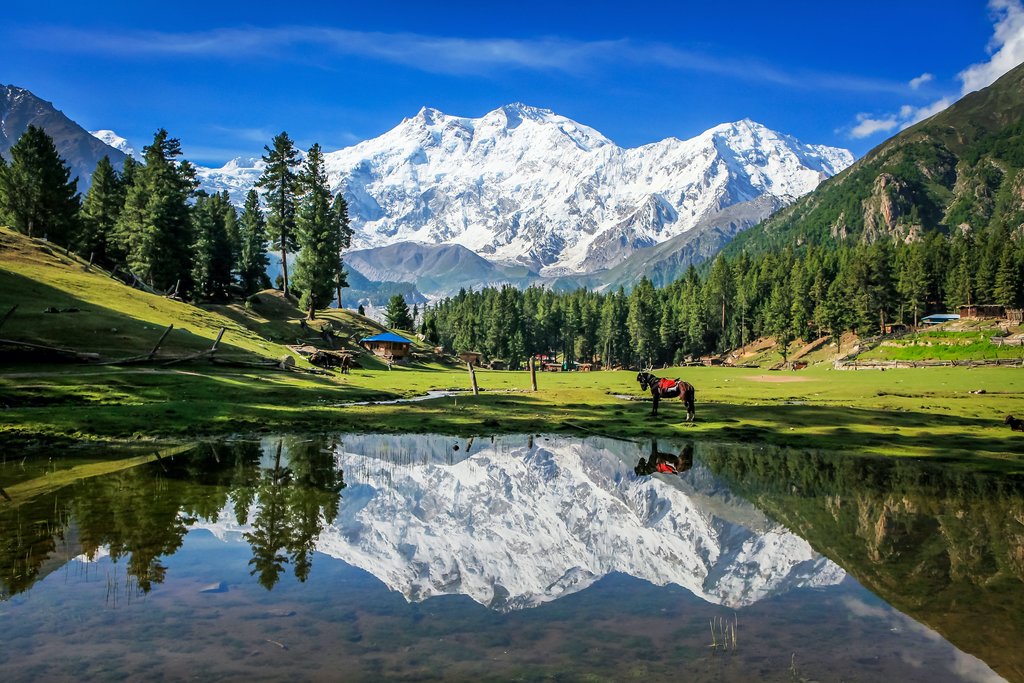
Elevation: 8,126 m
First ascent: July 3, 1953
Prominence: 4,608 m
-
Mountaineering Expeditions: Nanga Parbat is known for its demanding climbing routes, and mountaineers from around the world come here to test their skills and endurance. If you have experience in mountaineering and are well-prepared, you can join a guided expedition or hire local guides and porters to assist you.
-
Base Camps: The most common base camp for Nanga Parbat is the Fairy Meadows, a picturesque meadow with stunning views of the mountain. From Fairy Meadows, climbers start their ascent towards the peak. It is also a popular camping and trekking site for those who wish to enjoy the scenic beauty of the area without attempting the summit.
-
Trekking: Nanga Parbat offers various trekking routes that cater to different fitness levels and time constraints. The Rupal Valley and Raikot Face are popular routes for trekking enthusiasts. These treks provide an opportunity to witness the majestic beauty of the mountain up close, explore the surrounding valleys, and immerse yourself in the natural wonders of the region.
-
Accessibility: The closest major city to Nanga Parbat is Gilgit, which is well-connected by air and road to Islamabad, the capital of Pakistan. From Gilgit, you can arrange transportation to Fairy Meadows or other starting points for your trek or mountaineering expedition.
-
Weather and Seasons: The best time to travel to Nanga Parbat depends on your specific activities. For trekking and hiking, the summer months from June to August offer milder temperatures and clearer skies. However, for mountaineering, the preferred climbing season is typically in the spring or early summer, from May to June, when the weather conditions are more favorable for summit attempts.
-
Safety Considerations: Traveling to Nanga Parbat, especially for mountaineering, requires careful planning, preparation, and adherence to safety guidelines. It is important to be physically fit, acclimatize properly, and have the necessary equipment and experience to tackle the challenges of the mountain. It is highly recommended to consult with experienced guides, join organized expeditions, and follow the advice of local authorities.
-
Cultural Experience: In addition to its natural beauty, the region around Nanga Parbat offers a unique cultural experience. The local communities, such as the indigenous people of Gilgit-Baltistan, have a rich cultural heritage, and interacting with them can add depth to your travel experience.
It is essential to conduct thorough research, seek guidance from experienced individuals or tour operators, and ensure you have the appropriate permits and permissions before embarking on a journey to Nanga Parbat. Respect for the environment, local communities, and safety precautions are key to enjoying a fulfilling and memorable trip to this magnificent mountain.





